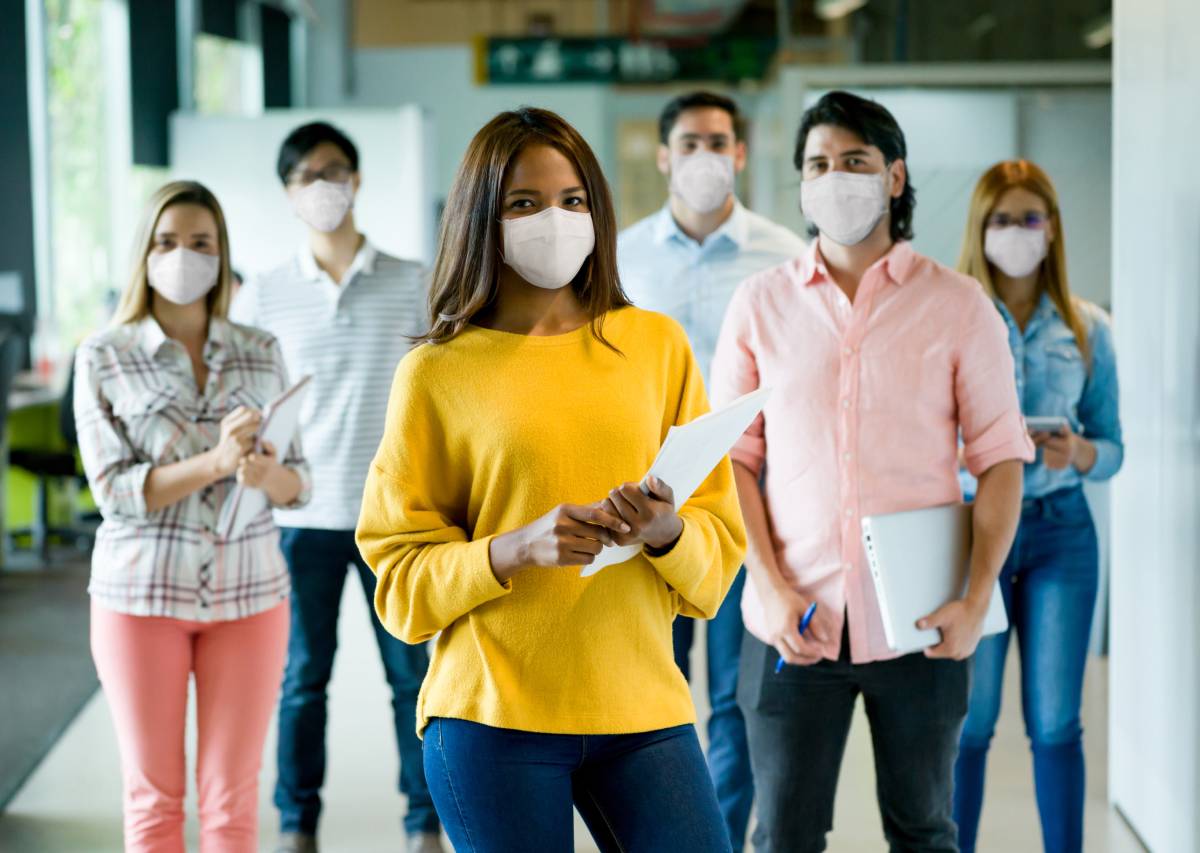Perhaps one of the most visible and enduring COVID-19 safety measures has been the widespread adaptation of mask wearing in public. However, it has also been one of the most criticized and challenged. Now, nearly three years into the COVID-19 pandemic, we are able to generate a comprehensive review of masking and its impact as a COVID prevention measure.
The spread of viral respiratory infections primarily occurs through droplet and/or airborne transmission. Individuals who are infected with a virus like COVID-19 can therefore transmit disease to those within close proximity to them without making physical contact, making prevention of transmission very difficult. People who are likely to come in contact with harmful airborne agents and viral infections – such as physicians – have long been using masks as a protective measure. However, the masking of American civilians in response to a public outbreak was unprecedented prior to the COVID-19 pandemic.
When it comes to the overall efficacy of masking, both for COVID-19 and in general, data review has shown that the type of mask is of utmost importance. Ultimately, the size of the pores in the mask material as well as the overall mask “fit” determine how well it is able to block viral particles. For these reasons, the degree to which different masks prevent disease transmission is highly variable. A 2017 study showed that homemade masks made using cotton T-shirts scored only half as well as surgical masks for fit.1 Although both types of masks significantly reduced the amount of microorganisms present in air samples, the homemade ones blocked only a third of the number of microorganisms as their commercial counterpart.1 The authors thus concluded that “a homemade mask should only be considered as a last resort to prevent droplet transmission from infected individuals, but it would be better than no protection.” In contrast, the N95 mask, which was the most robust commercial mask for the prevention of COVID-19 infection, has micropores approximately 8µm in diameter, which is sufficient to prevent many viral particles from reaching the wearer.2,3
Because of discrepancies in mask quality and compliance to continuous wear, epidemiological research on and studies that review the effects of masking policies during COVID-19 have had very mixed results. This is particularly true when the study population has been the general public. For example, a much-quoted 2020 Danish study concluded that “the recommendation to wear surgical masks to supplement other public health measures did not reduce the SARS-CoV-2 infection rate among wearers by more than 50% in a community with modest infection rates, some degree of social distancing, and uncommon general mask use.”4 These findings suggest that masks are perhaps not the ultimate solution on an epidemiological level. However, compelling studies have shown that masks can prevent transmission from sick patients to their well contacts,5,6 and that efficacy is improved when coupled with additional safety measures, such as continuous wear and frequent handwashing.7 Additionally, in contrast to the general population, healthcare workers significantly decrease their risk of infection through mask wearing.4 This finding might be attributable to improved compliance and the fact that non-compliance is more likely to result in an infection for healthcare workers as compared to civilians.
Considering the number of variables which contribute to the overall efficacy of mask wearing, as well as the conflicting findings of different epidemiological studies, it is difficult to make a blanket statement about the overall “success” of mask wearing measures throughout the COVID-19 pandemic. However, a review of existing data does show that continuous masking, use of proper surgical or N95 face masks, and supplementation with other safety precautions can be effective in reducing COVID-19 transmission.
References
1 Davies, A., Thompson, K. A., Giri, K., Kafatos, G., Walker, J., & Bennett, A. (2013). Testing the efficacy of homemade masks: would they protect in an influenza pandemic? Disaster medicine and public health preparedness, 7(4), 413–418. https://doi.org/10.1017/dmp.2013.43
2 Barasheed, O., Almasri, N., Badahdah, A. M., Heron, L., Taylor, J., McPhee, K., Ridda, I., Haworth, E., Dwyer, D. E., Rashid, H., Booy, R., & Hajj Research Team (2014). Pilot Randomised Controlled Trial to Test Effectiveness of Facemasks in Preventing Influenza-like Illness Transmission among Australian Hajj Pilgrims in 2011. Infectious disorders drug targets, 14(2), 110–116. https://doi.org/10.2174/1871526514666141021112855
3 Lee, S. A., Grinshpun, S. A., & Reponen, T. (2008). Respiratory performance offered by N95 respirators and surgical masks: human subject evaluation with NaCl aerosol representing bacterial and viral particle size range. The Annals of occupational hygiene, 52(3), 177–185. https://doi.org/10.1093/annhyg/men005
4 Bundgaard, H., Bundgaard, J. S., Raaschou-Pedersen, D., von Buchwald, C., Todsen, T., Norsk, J. B., Pries-Heje, M. M., Vissing, C. R., Nielsen, P. B., Winsløw, U. C., Fogh, K., Hasselbalch, R., Kristensen, J. H., Ringgaard, A., Porsborg Andersen, M., Goecke, N. B., Trebbien, R., Skovgaard, K., Benfield, T., Ullum, H., … Iversen, K. (2021). Effectiveness of Adding a Mask Recommendation to Other Public Health Measures to Prevent SARS-CoV-2 Infection in Danish Mask Wearers : A Randomized Controlled Trial. Annals of internal medicine, 174(3), 335–343. https://doi.org/10.7326/M20-6817
5 Li, Y., Liang, M., Gao, L., Ayaz Ahmed, M., Uy, J. P., Cheng, C., Zhou, Q., & Sun, C. (2021). Face masks to prevent transmission of COVID-19: A systematic review and meta-analysis. American journal of infection control, 49(7), 900–906. https://doi.org/10.1016/j.ajic.2020.12.007
6 Wang, Y., Tian, H., Zhang, L., Zhang, M., Guo, D., Wu, W., Zhang, X., Kan, G. L., Jia, L., Huo, D., Liu, B., Wang, X., Sun, Y., Wang, Q., Yang, P., & MacIntyre, C. R. (2020). Reduction of secondary transmission of SARS-CoV-2 in households by face mask use, disinfection and social distancing: a cohort study in Beijing, China. BMJ global health, 5(5), e002794. https://doi.org/10.1136/bmjgh-2020-002794
7 Aiello, A. E., Murray, G. F., Perez, V., Coulborn, R. M., Davis, B. M., Uddin, M., Shay, D. K., Waterman, S. H., & Monto, A. S. (2010). Mask use, hand hygiene, and seasonal influenza-like illness among young adults: a randomized intervention trial. The Journal of infectious diseases, 201(4), 491–498. https://doi.org/10.1086/650396


